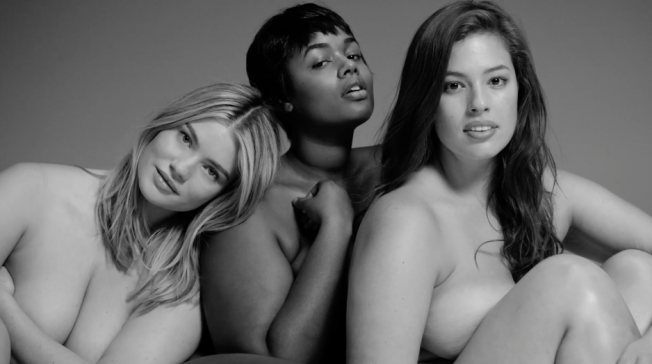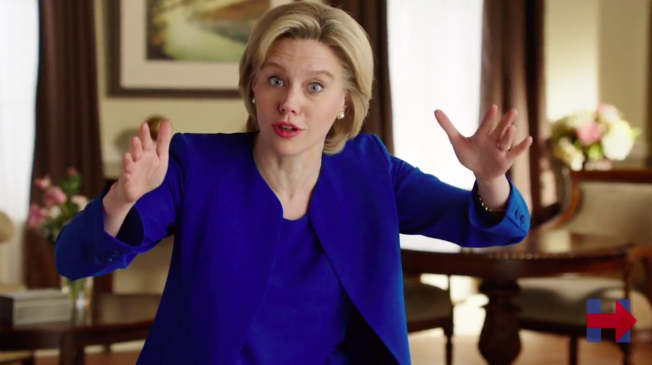
In a scandal that may spark déjà vu among observers with a long memory, retailer Lane Bryant is accusing TV networks ABC and NBC of refusing to air a body-positive lingerie ad featuring plus-size models.
"This Body," created by MDC-owned Laird+Partners, features Sports Illustrated swimsuit model Ashley Graham alongside industry colleagues Precious Lee, Tara Lynn, Denise Bidot and Georgia Pratt, wearing little or no clothing while boxing, breastfeeding and striking poses, delivering confident lines about their curvy bodies.
Bryant claims the networks rejected the commercial outright. ABC declined to comment to People, and NBC said it simply asked for minor edits as part of a routine review. Lane Bryant denies the latter, and also refuses to make any changes to the creative.
"We need to do a better job of representing the body," Brian Beitler, CMO of Lane Bryant, said during a South by Southwest panel that AdFreak attended on Sunday. "Our bodies are about what we do and it's not about how we look. ... We don't believe that [body positivity] is just a women's issue, it's a human issue."
It's not the company's first run-in with controversy around its TV marketing. In 2010, the company alleged that ABC and Fox were unfairly restricting the number of times it could air another lingerie ad, also featuring Graham, while ceding passage to similar spots featuring thinner Victoria's Secret models. ("Requested edits" aside, both of Lane Bryant's ads are relatively tame, less about seduction than self-worth, especially compared to other lingerie spots considered too racy for American TV.)
Last year, Lane Bryant deliberately took aim at Victoria's Secret's messaging with its "I'm No Angel" campaign, also featuring Graham, to the delight of online audiences.
Whether Lane Bryant is an innocent victim here, or deliberately staging a flap for publicity, doesn't really matter. The biases about body type and size that it challenges are already implicit in the vast majority of pop culture. As a relatively loud voice—the brand has more than 700 stores—battling an unbalanced status quo, it deserves all the attention it's getting, especially when the cause it's championing is so personal, and important, to so many.
CREDITS
Client: Lane Bryant
Chief Executive Officer: Linda Heasley
Chief Marketing Officer: Brian Beitler
Assistant Vice President, Marketing: Kathy Quickert
Senior Marketing Manager: Heather McGarry
Digital Director: Richard Ledger
Senior Copy Manager: Chris Frey
Associate Creative Director: Nick Coakley
Vice President, Creative: Mindy Torrey
Vice President, Strategy: Vicki Shamion
Agency: Laird + Partners
Executive Creative Director, Partner: Hans Dorsinville
Senior Art Director: Georgina Rex
Editorial Director: Ranjani Gopalarathinam
Account Supervisor: Lauren Levine
Head of Digital Strategy: Mike Karam
Senior Producer: Alexandra Lunn
Production Associate: Caitlin Phelps
Senior Vice President, Global Print Production: Patrick Kinsella,















































